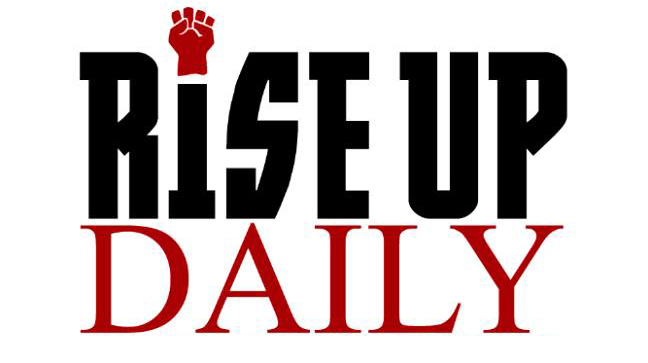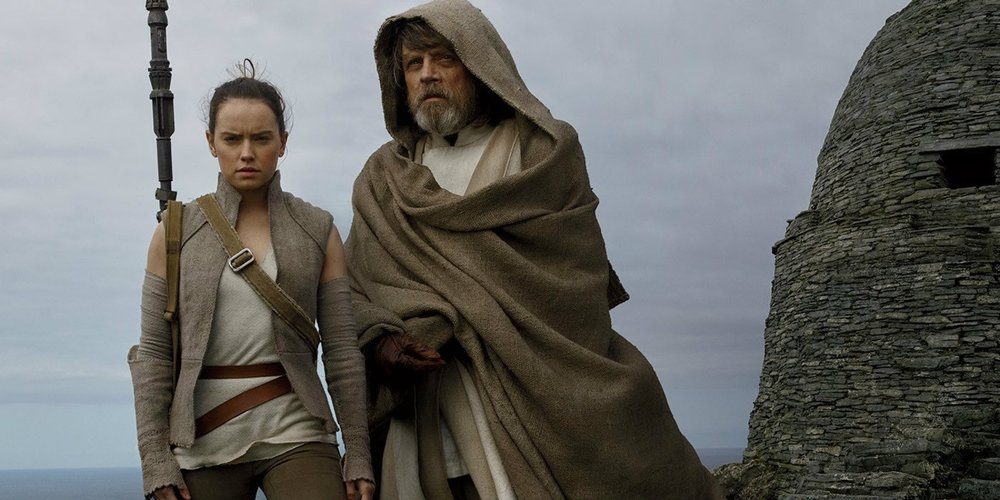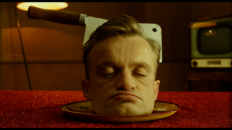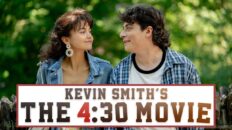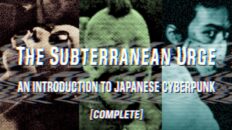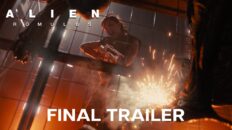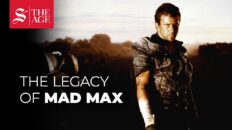“If there were no room for doubt, there would be no room for me.” ― Frederick Buechner
***
At the end of The Force Awakens, Rey (Daisey Ridley) has located Luke Skywalker (Mark Hamill), who has hidden himself away from the universe on a remote island on a remote planet and we were all left wondering, What will happen?, Will Luke return to fight the First Order and bring hope to the Rebellion?, Why is Luke here? In The Last Jedi, Luke flips these questions the audience has and asks Rey, “Why are you here?” He repeats the question multiple times, until finally the question he poses becomes clear, “Why are you (specifically Rey, instead of anyone else) here?”
Unlike many children of the 80s, I didn’t grow up watching Star Wars. I wasn’t allowed to watch many films and little TV. It wasn’t until I was a teenager that I saw the original trilogy, and I remember a heated discussion between my uncle and parents about allowing me to. My uncle wanted to show them to me, but my parents were hesitant–Star Wars, they believed, was New Age mumbo-jumbo and possibly demonic. When I did finally see the original trilogy, it didn’t have the affect on me that it has on so many. I enjoyed it, but more as a type of rebellious indulgence than a source of wonder. But I recognize that source of wonder that many share in the property from other stories that did have that affect on me like J.R.R. Tolkien’s Lord of the Rings and, if one can compare it, Victor Hugo’s Les Miserables. So I have come to each new Star Wars film with the hope that it would speak more directly to me in that way: spark my imagination, fill me with hope, fill me with wonder. I walked out of The Last Jedi for the first time in love with a Star Wars film.
If The Force Awakens rebooted the franchise (again) under the Disney corporate behemoth and direction of J.J. Abrams with not much more than a recycling of the original trilogy in a new form, last year’s Rogue One (not a part of any of the primary trilogies) began a decidedly new direction for the franchise that is continued in The Last Jedi. We could label this new direction as deconstructionist, but as author David Dark reminds us, reducing a thing to a label allows us to view it as dispensed with, taken care of, and filed away. Indeed, Yoda himself reminds Luke here to engage in what is in front of him–not the future, or the “big picture”, or whatever he has labelled himself or Rey or the First Order or the Rebellion or the Jedi religion, but the personal, individual needs right in front of his nose.
What Rogue One and The Last Jedi do is introduce doubt, nuance, and characters into the world of Star Wars who must struggle not just with good and bad, black and white, but with uncertainty–maybe especially their own. It introduces new characters and allows us to see old characters in new light, who don’t just need to make a clear cut choice between right and wrong, but have to bear the weight of those choices in the human (and alien) lives it costs, and who at times may be seriously conflicted about what the good, the right thing to do is. The Last Jedi offers us the opportunity to engage with those characters in a way that opens up a universe of possibilities and readings.
One of my criticisms of The Force Awakens was the perceptible lack of scale. Whatever faults the original trilogy and even the prequel trilogy had, the sense of grandeur was not one. The universe was large, and while we focused on a few dozen characters, we also had a clear sense of the expansivity of the universe they inhabited and the passage of great lengths of time in places during the stories. But while The Last Jedi doesn’t greatly expand this sense of scale from its immediate predecessor, it does expand the internal lives of its characters to match the cosmic physical expanse we have grown to expect from the Star Wars universe. For instance, Luke Skywalker becomes a three-dimensional character here in ways we never saw in the original trilogy. Here he is not just fighting for what’s right, but dealing with failure to maintain the peace and prosperity and freedom he had won. No longer the slightly emo, overly-confident young man he once was, he has come to a place of loss and questioning everything he had devoted his young life toward.
We value confidence in people–both in those we know in real life and in characters in our fictional stories–but what we often fail to acknowledge or give weight to or even discuss is the internal struggle and wrestling with doubt that precedes and informs most action, whether it be to engage that doubt or cast it aside. Luke deals with his doubt by a desire to cast aside the Jedi religion–something he comes to understand was held in secret by a powerful, select few, but is in fact, accessible to all. Rey deals with doubt by rushing headlong toward it. Kylo Ren (Adam Driver) deals with doubt by viewing it as a weakness, a thing to be overcome. Poe Dameron (Oscar Isaac) similarly views doubt as a weakness, actively displaying a cheeky-“come-at-me-bro” attitude toward his foes or anyone he views as hindering progress for the right cause. Former stormtrooper Finn (John Boyega) deals with doubt by wanting to run away. New character DJ (a fine, stuttering, twitchy performance by Benicio Del Toro) deals with doubt by accepting it as a type of worship–everything is doubtful except oneself. And Rose Tico (another new character portrayed by Vietnamese actress Kelly Marie Tran) deals with doubt by acknowledging it, then rolling up her sleeves and fighting it. Rose is, in fact, my favorite Star Wars character ever–willing to “kill her darlings”, fight to save one person instead of the universe, and fall in love despite an awareness that pain and loss and vulnerability are hard crosses to bear.
The Last Jedi also casts aside many elements that have become canon in the Star Wars universe and some questions that the lackluster The Force Awakens introduced. C3P-O’s new red arm? Nonchalantly ignored and never addressed. Midichlorians? A lie. Or at least not the whole truth (in his review at Film Freak Central, Walter Chaw insightfully compares elements of the film to Akira Kurosawa’s work–indeed, Rashomon is directly evoked by the dueling narratives of Luke Skywalker and Kylo Ren’s fallout, but also by addressing in a meta-narrative sense certain canonical elements such as midichlorians). And the aforementioned space and time scope, instead choosing to focus on a limited range of locations and characters. In fact, the primary storyline involving the rebel fleet’s flight from the First Order is less reminiscent of any previous Star Wars space battle than it is of Battlestar Galactica’s (2004) brilliant, gripping pilot, “33”.
But perhaps the largest element of change is the clear pushback against the hero’s journey, the now famous framework by Joseph Cambell that by popular account George Lucas based his original idea for Star Wars around. While certain parts of that framework are clearly incorporated–the “approach to the inmost cave” is so on-the-nose here it threatens to shatter the framework through sheer brute force–at each step, the assumptions are questioned. Rey doesn’t refuse the call, she dives toward it, directly. The mentor (Luke) learns more from the student (Rey)–or at least a new lesson he hadn’t considered. The ordeal and reward are twisted and given new shape through the dual means of hope for redemption of a villain and even the idea of an “ultimate” or iconic villain at all (the interaction between Supreme Leader Snoke and Kylo Ren is a fulfillment of the Sith liturgical practice of having a master to embody power and an apprentice who craves it as well as a choice–not for the hero and their journey, but for the villain–to choose a different path, a path of redemption).
In the end we are left with characters we know and are familiar with who are no longer who we knew them as, and new characters who ask themselves and us questions we had not considered in the previous framework we have grown to know as Star Wars. Is this a deconstruction? A reconstruction? Something new in an old package? Do we want new stories or just old stories retold? Do we want to engage in new questions we hadn’t considered or revert to confirming that only the old questions asked are worth answering? In the current state of Hollywood and our viewing habits where we both crave safety and nostalgia while lamenting an overabundance of sequels, franchises, and shared universes, are we willing to engage a familiar commodity that dares to present us with familiar stories from a different point of view? That asks us, “Why are you here?” Are we willing to ask ourselves why we are here?
